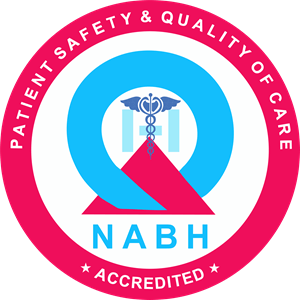ROTATOR CUFF TEAR
What is the Rotator Cuff?
The Rotator Cuff is a group of 4 muscles and tendons (supraspinatus, infraspinatus, subscapularis and teres minor) responsible for the stability and movement of the shoulder. Apart from its role as a rotator of the shoulder, the integrity and contraction of the rotator cuff muscles keeps the ball of the joint centered on the socket.
What are Rotator Cuff Tears?
They are disruptions in the continuity of any of the 4 rotator cuff tendons which maybe traumatic (as a result of an injury) or degenerative (age-related). Rotator cuff tears are rare in patients under the age of 40.
The supraspinatus is the most commonly torn tendon and the symptoms felt by patients vary from severe pain and functional disability to no symptoms whatsoever. Partial tears may heal naturally but full thickness tears do not, however many patients learn to compensate with other muscles to function normally. We do not yet understand why some patients experience problems and some do not.
What are the symptoms of Rotator Cuff Tears?
The most common symptom is pain and weakness when lifting the arm overhead. Typically the pain is better with rest and worse with movement. Patient may have disturbed sleep, have difficulty in combing one’s hair, trouble putting on/ removing clothes. For large tears patients may not be able to lift the arm at all without help.
How is a rotator cuff injury diagnosed?
In addition to a complete medical history and physical exam, diagnostic procedures for a rotator cuff injury may include the following:
- X-ray. A diagnostic test which uses invisible electromagnetic energy beams to produce images of internal tissues, bones, and organs onto film.
- Magnetic resonance imaging (MRI). A diagnostic procedure that uses a combination of large magnets, radiofrequencies, and a computer to produce detailed images of organs and structures within the body.
A rotator cuff may tear partially or fully. Partial-thickness tears do not completely sever the tendon from the shoulder.
What causes a rotator cuff injury?
There are 2 main causes of rotator cuff tears: injury and degeneration. An injury to the rotator cuff, such as a tear, may happen suddenly when falling on an outstretched hand. It may also develop over time due to repetitive activities. Rotator cuff tears may also happen due to aging, with degeneration of the tissues.
What is the treatment for Rotator Cuff Tears?
Pain relief and a good level of functional recovery can be achieved with painkillers and physiotherapy for patients with rotator cuff tears. However for those with on-going problems, recent studies have shown that rotator cuff repair surgery is effective in reducing pain and improving function.
Some tears can progress (become larger) over time and can be accompanied by arthritis in the shoulder over a number of years if not repaired.
What type of surgery is involved?
There are a number of ways to treat rotator cuff tears. These include Open, Mini-open and Arthroscopic (keyhole) techniques. Open is the classical technique; Arthroscopic is the “keyhole” approach while mini-open is the intermediate (small open) approach.
Arthroscopic rotator cuff repair is preferred over the older techniques because it allows the surgeon to treat all coexisting pathologies with the same small incisions whilst providing a more rapid recovery.
Surgery to repair a torn rotator cuff most often involves re-attaching the tendon to the bone with the help of small implants called suture anchors. Although rotator cuff surgery can reattach the torn tendon, there is no guarantee that the tendon will fully heal. Many things, such as your age and the size and location of the tear, need to be carefully considered before deciding whether to choose surgical repair. If the tendon is already heavily worn, it may be at risk of tearing again after the surgery. However if there are additional problems such as arthritis or the tear is too large to repair; alternative surgical options may be required.
What is rotator cuff arthropathy?
This is the end-result of a cuff tear when the tendon is not reparable, muscle quality is bad, shoulder joint undergoes arthritic changes. Such patients are aged and elderly; who have severe limitation of active shoulder movements. This subgroup of patients won’t benefit from arthroscopic surgery but will need open surgery (reverse shoulder replacement) to restore shoulder function.



Wow amazing blog layout How long have you been blogging for you made blogging look easy The overall look of your web site is magnificent as well as the content